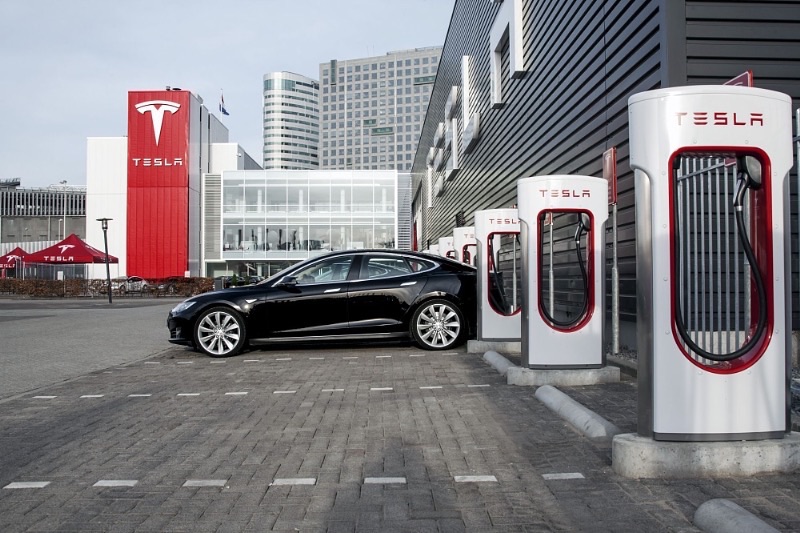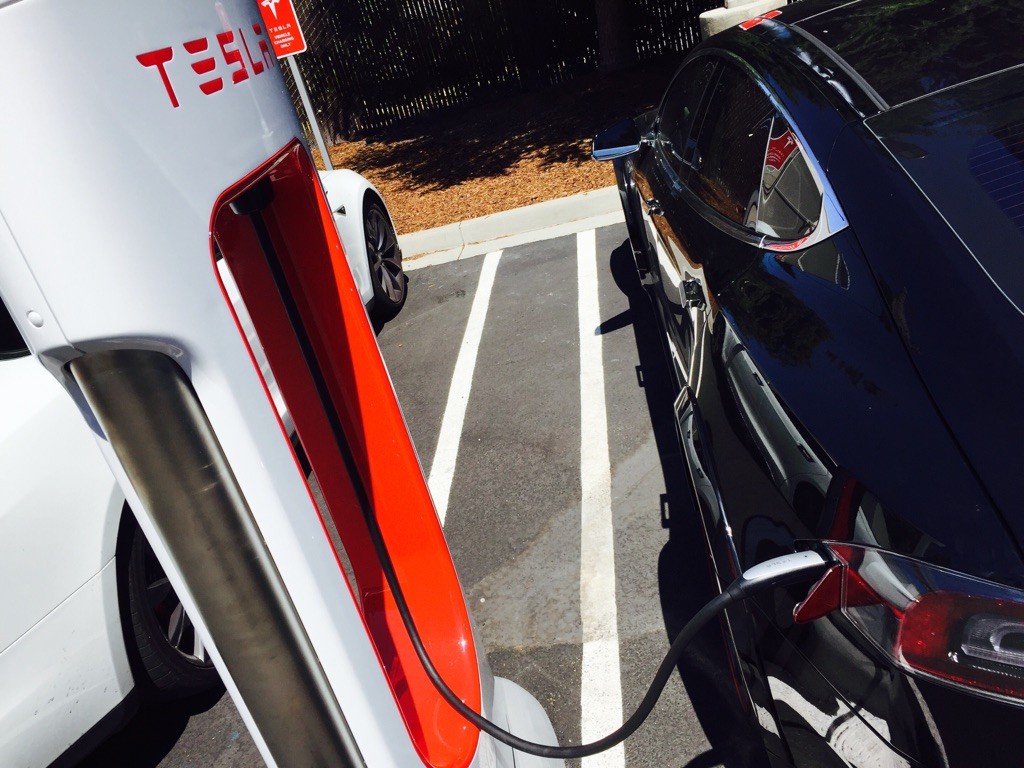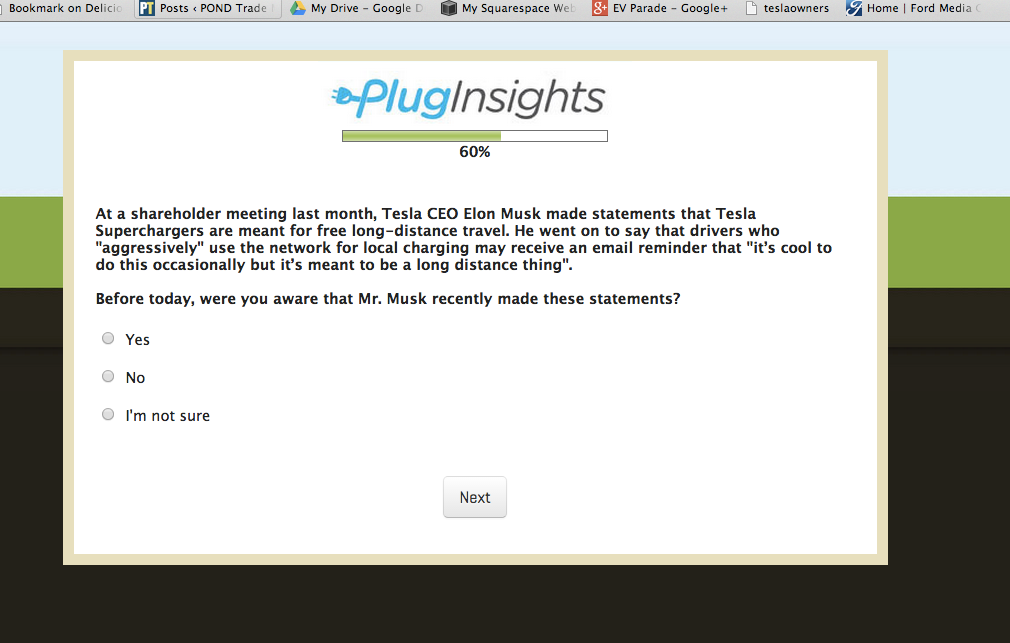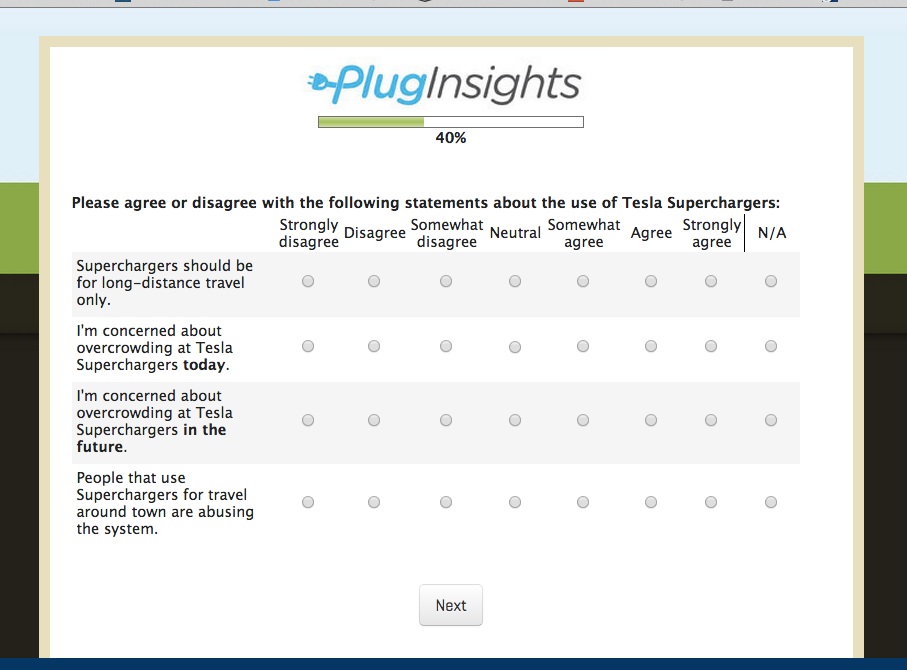News
Why are Tesla Superchargers Only for Long-distance Travel?

Before going on vacation around July 4th holiday, PlugInsights sent a short survey to me with questions about Tesla supercharging procedures and also about recent comments by Elon Musk. About half way into the short survey, it delves into Elon Musk’s supercharging “overuse” comment regarding some daily Tesla commuters relying on the free charging stations in southern California.
My first thought, this again. Musk’s comments made some waves last month but why dredge this issue to the surface in the form of a survey from PlugInsights, a division of RECARGO.
Is something afoot at Tesla? Why is the company worried enough to conduct a survey about this topic and especially Musk’s comments at the annual shareholders meeting. One question from the survey actually discusses the actual comments by Musk. “Before today, were you aware that Mr. Musk recently made these statements?”
Below are Musk’s comments at the recent annual shareholders meeting held in June:
(paraphrased via the survey)…”that superchargers are meant for free, long-distance travel” and “that drivers who aggressively use the network for local charging may receive an email reminder that it’s ‘cool to do this occasionally but it’s meant for a long-distance thing.’
So why did Elon Musk comment on this relatively small issue? Ashley Vance recent biography on Elon Musk points out that Musk usually doesn’t get involved in PR, unless an issue threatens one of his companies. So how could this threaten Tesla Motors? My speculation is the very real possibility of battery capacity loss and drastically reduced range with multiple instances of DC fast-charging on a daily basis.
Could these patterns lead to drastically reduced battery packs ranges by year three or four of ownership and possibly lead to Tesla replacing a lot of battery packs, due to their warranty coverage?
My speculation centers around 120 kW of DC energy flowing into the battery pack on a daily basis. Did Tesla test battery packs for multiple, daily DC-charging usage? Maybe not.
Musk mentioned at the annual shareholder meeting that fast charging was intended for destination traveling and implied it wasn’t for daily use by commuters.
The Idaho National laboratory conducted a study on DC fast-charging and its effects on battery packs some years ago and released findings in 2014. Using 2012 Nissan Leafs, the study compared the effects of different types of charging: level 2 charging (3.3 kW) and DC fast-charging (50 kW).
The study revealed after 40,000 miles of testing that there was little loss of initial capacity and that the DC-fast charging battery pack had only lost 3 percent more than the other Nissan Leaf using level 2 battery charging.
However, Tesla Superchargers are dishing out 120 kW DC versus the Idaho study of 50 kW, more than 2x the amount of electricity coming into battery pack. That’s a lot stress on the battery management system to keep heat levels down, plus these car owners are supercharging daily, maybe doing it twice a day?
Many automakers have said that DC fast charging is fine on the battery pack, as long as it’s not done excessively. It seems twice a day could be considered excessive and cause concern for Tesla execs. This could be leading up to some proviso with excessive supercharging and the battery pack warranty, hence the PlugInsights survey on usage and expectations.
What about you, any other thoughts on why this is such an issue for Tesla?
** My other mild theory is Tesla’s rising electricity costs for owners employing supercharging only mode. The results of PlughInsights survey showed that 26% of Model S owners polled have used Tesla Superchargers as a free local alternative to home charging.

Elon Musk
Elon Musk’s X will start using a Tesla-like software update strategy
The initiative seems designed to accelerate updates to the social media platform, while maintaining maximum transparency.

Elon Musk’s social media platform X will adopt a Tesla-esque approach to software updates for its algorithm.
The initiative seems designed to accelerate updates to the social media platform, while maintaining maximum transparency.
X’s updates to its updates
As per Musk in a post on X, the social media company will be making a new algorithm to determine what organic and advertising posts are recommended to users. These updates would then be repeated every four weeks.
“We will make the new 𝕏 algorithm, including all code used to determine what organic and advertising posts are recommended to users, open source in 7 days. This will be repeated every 4 weeks, with comprehensive developer notes, to help you understand what changed,” Musk wrote in his post.
The initiative somewhat mirrors Tesla’s over-the-air update model, where vehicle software is regularly refined and pushed to users with detailed release notes. This should allow users to better understand the details of X’s every update and foster a healthy feedback loop for the social media platform.
xAI and X
X, formerly Twitter, has been acquired by Elon Musk’s artificial intelligence startup, xAI last year. Since then, xAI has seen a rapid rise in valuation. Following the company’s the company’s upsized $20 billion Series E funding round, estimates now suggest that xAI is worth tens about $230 to $235 billion. That’s several times larger than Tesla when Elon Musk received his controversial 2018 CEO Performance Award.
As per xAI, the Series E funding round attracted a diverse group of investors, including Valor Equity Partners, Stepstone Group, Fidelity Management & Research Company, Qatar Investment Authority, MGX, and Baron Capital Group, among others. Strategic partners NVIDIA and Cisco Investments also continued support for building the world’s largest GPU clusters.
News
Tesla FSD Supervised wins MotorTrend’s Best Driver Assistance Award
The decision marks a notable reversal for the publication from prior years, with judges citing major real-world improvements that pushed Tesla’s latest FSD software ahead of every competing ADAS system.

Tesla’s Full Self-Driving (Supervised) system has been named the best driver-assistance technology on the market, earning top honors at the 2026 MotorTrend Best Tech Awards.
The decision marks a notable reversal for the publication from prior years, with judges citing major real-world improvements that pushed Tesla’s latest FSD software ahead of every competing ADAS system. And it wasn’t even close.
MotorTrend reverses course
MotorTrend awarded Tesla FSD (Supervised) its 2026 Best Tech Driver Assistance title after extensive testing of the latest v14 software. The publication acknowledged that it had previously criticized earlier versions of FSD for erratic behavior and near-miss incidents, ultimately favoring rivals such as GM’s Super Cruise in earlier evaluations.
According to MotorTrend, the newest iteration of FSD resolved many of those shortcomings. Testers said v14 showed far smoother behavior in complex urban scenarios, including unprotected left turns, traffic circles, emergency vehicles, and dense city streets. While the system still requires constant driver supervision, judges concluded that no other advanced driver-assistance system currently matches its breadth of capability.
Unlike rival systems that rely on combinations of cameras, radar, lidar, and mapped highways, Tesla’s FSD operates using a camera-only approach and is capable of driving on city streets, rural roads, and freeways. MotorTrend stated that pure utility, the ability to handle nearly all road types, ultimately separated FSD from competitors like Ford BlueCruise, GM Super Cruise, and BMW’s Highway Assistant.
High cost and high capability
MotorTrend also addressed FSD’s pricing, which remains significantly higher than rival systems. Tesla currently charges $8,000 for a one-time purchase or $99 per month for a subscription, compared with far lower upfront and subscription costs from other automakers. The publication noted that the premium is justified given FSD’s unmatched scope and continuous software evolution.
Safety remained a central focus of the evaluation. While testers reported collision-free operation over thousands of miles, they noted ongoing concerns around FSD’s configurable driving modes, including options that allow aggressive driving and speeds beyond posted limits. MotorTrend emphasized that, like all Level 2 systems, FSD still depends on a fully attentive human driver at all times.
Despite those caveats, the publication concluded that Tesla’s rapid software progress fundamentally reshaped the competitive landscape. For drivers seeking the most capable hands-on driver-assistance system available today, MotorTrend concluded Tesla FSD (Supervised) now stands alone at the top.
News
Elon Musk’s Grokipedia surges to 5.6M articles, almost 79% of English Wikipedia
The explosive growth marks a major milestone for the AI-powered online encyclopedia, which was launched by Elon Musk’s xAI just months ago.

Elon Musk’s Grokipedia has grown to an impressive 5,615,201 articles as of today, closing in on 79% of the English Wikipedia’s current total of 7,119,376 articles.
The explosive growth marks a major milestone for the AI-powered online encyclopedia, which was launched by Elon Musk’s xAI just months ago. Needless to say, it would only be a matter of time before Grokipedia exceeds English Wikipedia in sheer volume.
Grokipedia’s rapid growth
xAI’s vision for Grokipedia emphasizes neutrality, while Grok’s reasoning capabilities allow for fast drafting and fact-checking. When Elon Musk announced the initiative in late September 2025, he noted that Grokipedia would be an improvement to Wikipedia because it would be designed to avoid bias.
At the time, Musk noted that Grokipedia “is a necessary step towards the xAI goal of understanding the Universe.”
Grokipedia was launched in late October, and while xAI was careful to list it only as Version 0.1 at the time, the online encyclopedia immediately earned praise. Wikipedia co-founder Larry Sanger highlighted the project’s innovative approach, noting how it leverages AI to fill knowledge gaps and enable rapid updates. Netizens also observed how Grokipedia tends to present articles in a more objective manner compared to Wikipedia, which is edited by humans.
Elon Musk’s ambitious plans
With 5,615,201 total articles, Grokipedia has now grown to almost 79% of English Wikipedia’s article base. This is incredibly quick, though Grokipedia remains text-only for now. xAI, for its part, has now updated the online encyclopedia’s iteration to v0.2.
Elon Musk has shared bold ideas for Grokipedia, including sending a record of the entire knowledge base to space as part of xAI’s mission to preserve and expand human understanding. At some point, Musk stated that Grokipedia will be renamed to Encyclopedia Galactica, and it will be sent to the cosmos.
“When Grokipedia is good enough (long way to go), we will change the name to Encyclopedia Galactica. It will be an open source distillation of all knowledge, including audio, images and video. Join xAI to help build the sci-fi version of the Library of Alexandria!” Musk wrote, adding in a later post that “Copies will be etched in stone and sent to the Moon, Mars and beyond. This time, it will not be lost.”











